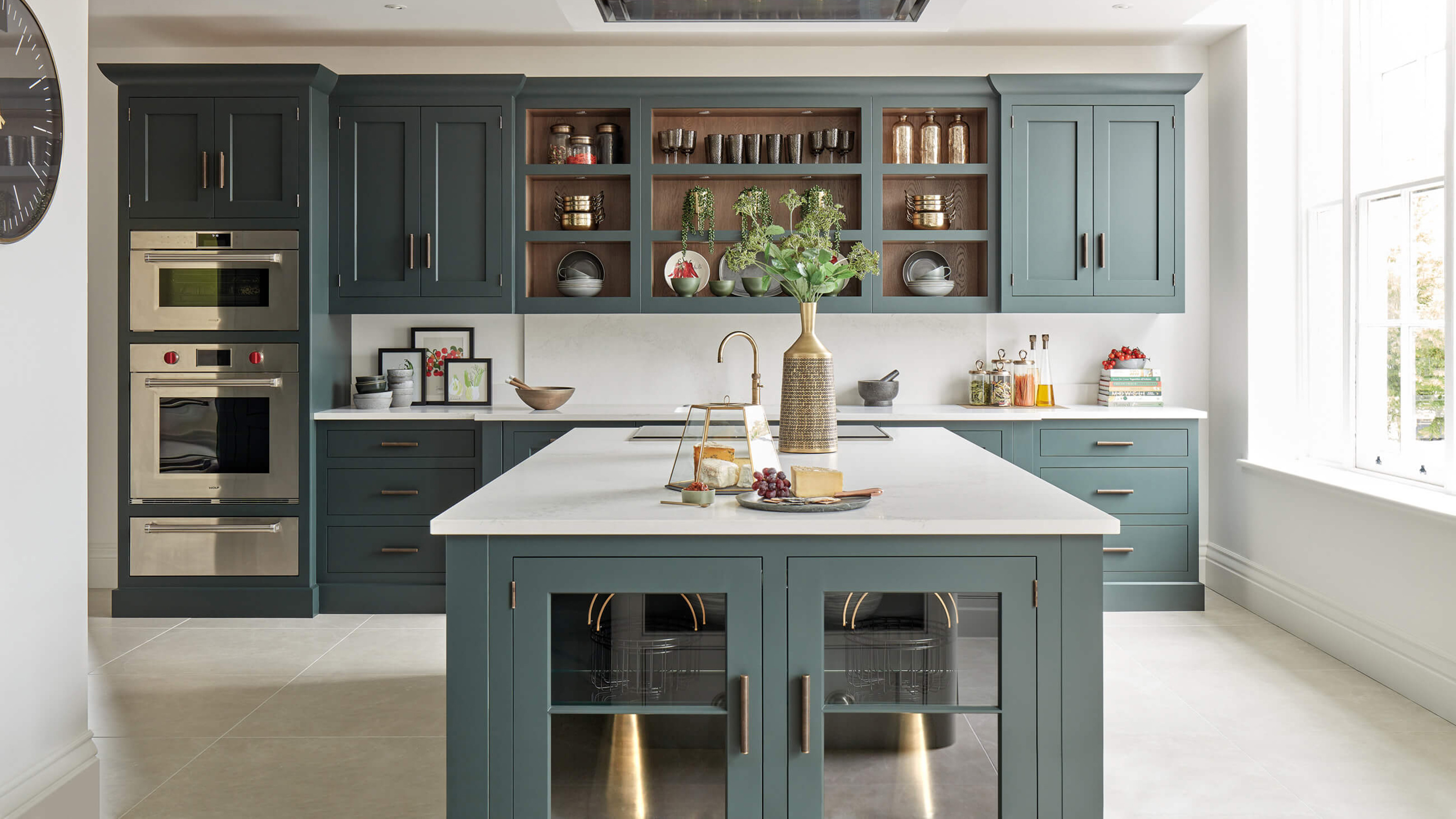

Kitchen cabinets are of course, an integral part of every kitchen space and whether you’ve decided to simply replace the cabinet doors, or if you’re looking to remodel your entire kitchen, it's key to consider the different types of kitchen cabinet materials out there to ensure you find the right style for your home.
Of course, good looks are crucial, especially if recreating your favorite kitchen cabinet ideas, but there are many more factors to consider also so that you invest in the perfect fit for both your lifestyle and budget.
From costs and longevity, to ease of installation and upkeep like cleaning, we spoke to a handful of kitchen designers about the different types of kitchen cabinet materials on the market, plus their pros and cons.
Which material is best to use for kitchen cabinets?
There are four main types of kitchen cabinet materials you'll find for boxes and door fronts. They are solid wood and man-made materials including medium-density fibreboard (MDF), plywood and metal. Each have their pros and cons, and you'll want to consider how much they will cost you, their durability and style as well as the ease of installing kitchen cabinets before you come to a final decision. So yes, selecting the right material for your space can get a little overwhelming.
Dean Palmer, Managing Director at KNB who supply designer kitchens at budget-friendly prices notes, 'Choosing a kitchen cabinet material is the first step in choosing the style and design of a kitchen. Be sure to think about how the kitchen will be used, whether you’ll be cooking a lot, entertaining guests, or feeding little ones in it. All of these factors may play a part in the decision-making process. Once you’ve considered the practicalities and appearance of each material, the rest of the kitchen will soon start to take shape.'
Carlos Coronado, Lead Designer, Muretti adds, 'Solid wood is an option that will give you a luxurious feel. It also provides you with an option for easy maintenance as things can be changed per piece if needed, and not a complete rehaul as you would need with other materials such as MDP. The negatives are that it is one of the materials higher to maintain, it comes with a high price tag, and prone to humidity.' Laminate is another popular option, 'While it is considered to be one of the most versatile options for your kitchen, it also boasts in being a great cost effective solution with less maintenance and a maximum durability.'
Plywood kitchen cabinets
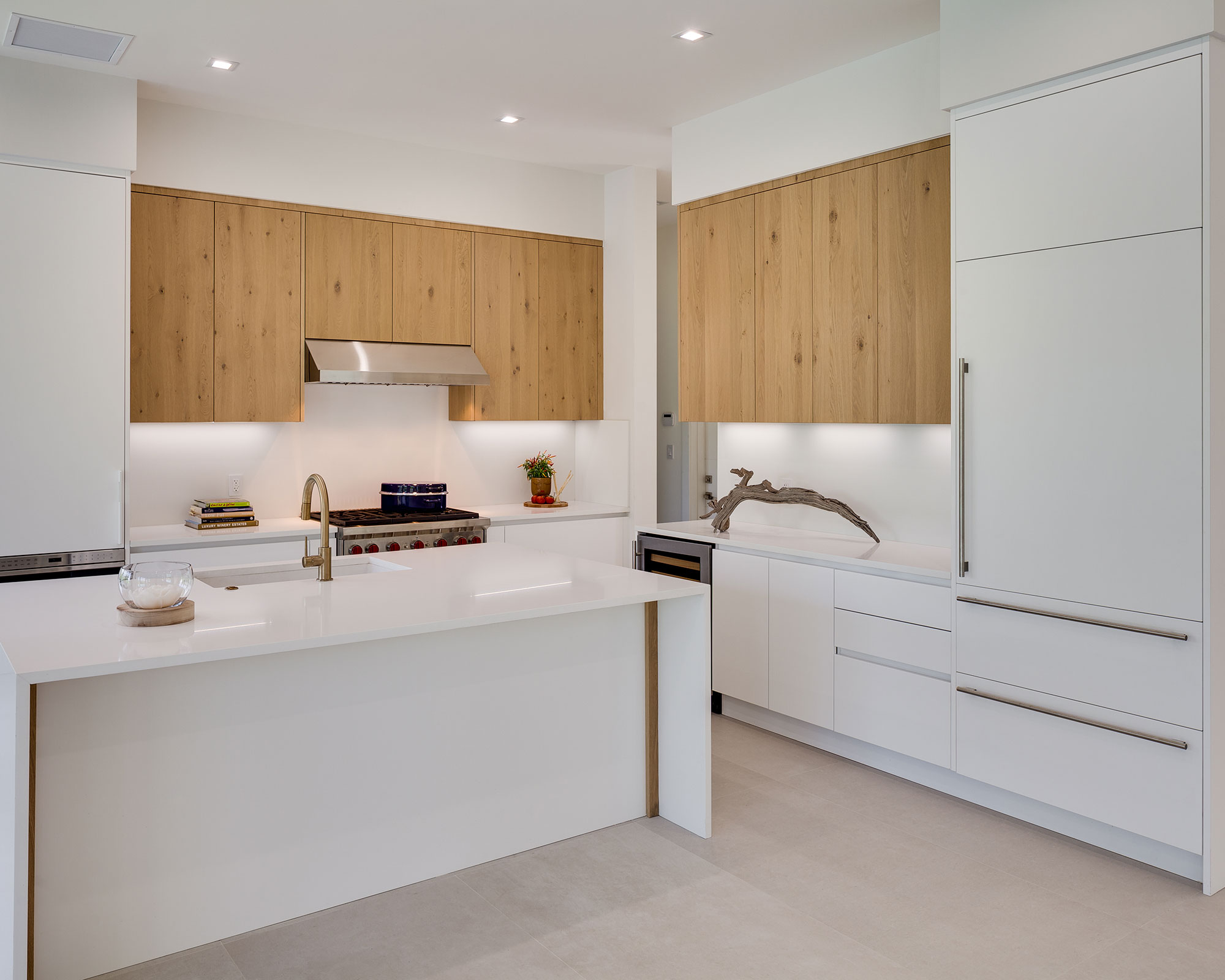
Plywood is a good option if you want to DIY your cabinets. The price point varies depending on the grade, as does the durability. Teri Simone, Chief Kitchen Designer for Nieu Cabinet Doors notes 'Plywood is a great material for building your own cabinet boxes – it's affordable, available in large sheets and various wood species to allow a wood-look interior to your cabinet box. Typically paired with painted doors, plywood is a DIY-friendly material for building cabinet boxes.'
According to Palmer, the pros of plywood for kitchen cabinets are:
- Easy to repair: Plywood is quite easy to manipulate, which means if it ever gets chipped or damaged, it can usually be repaired to a high standard. It’s possible to sand down or fill a chip with wood filler, making the damage next to impossible to spot.
- Lightweight: It’s lightweight, meaning it’s easy enough to erect, and can withstand a heavy load such as cans of food and casserole dishes.
- Can be inexpensive: Depending on the grade, plywood can start at as little as $10 per panel or around £11per square metre.
Simone continues 'Plywood is rarely used but can be the material of choice for some cabinet makers when constructing slab or flat panel doors. Furniture-grade plywood with a hardwood veneer face layered over a softwood plywood core can produce solid slab doors. A veneer tape applied to the edges will ensure a good match to the fronts. The layered construction of plywood doesn’t allow for the machining of the face so they really are only suited to slab style doors.'
Palmer notes how there are a few less favorable features of plywood that can cause issues, especially when used for kitchen cabinets, if the installer is unaware of them.
Cons of plywood:
- It's imperfect: As far as planks and panels of wood go, plywood is far from perfect. It’s important to look out for knots and gaps in the panels when building, especially for kitchen cabinets, as these can be unsightly or even lead to areas of weakness.
- Thinner plywood can break: Plywood comes in different thicknesses, and if it gets overloaded, thinner planks will snap. Thick plywood should be used for kitchen cabinet shelves and exteriors, and thinner ones can be used as a backing.
MDF Kitchen Cabinets
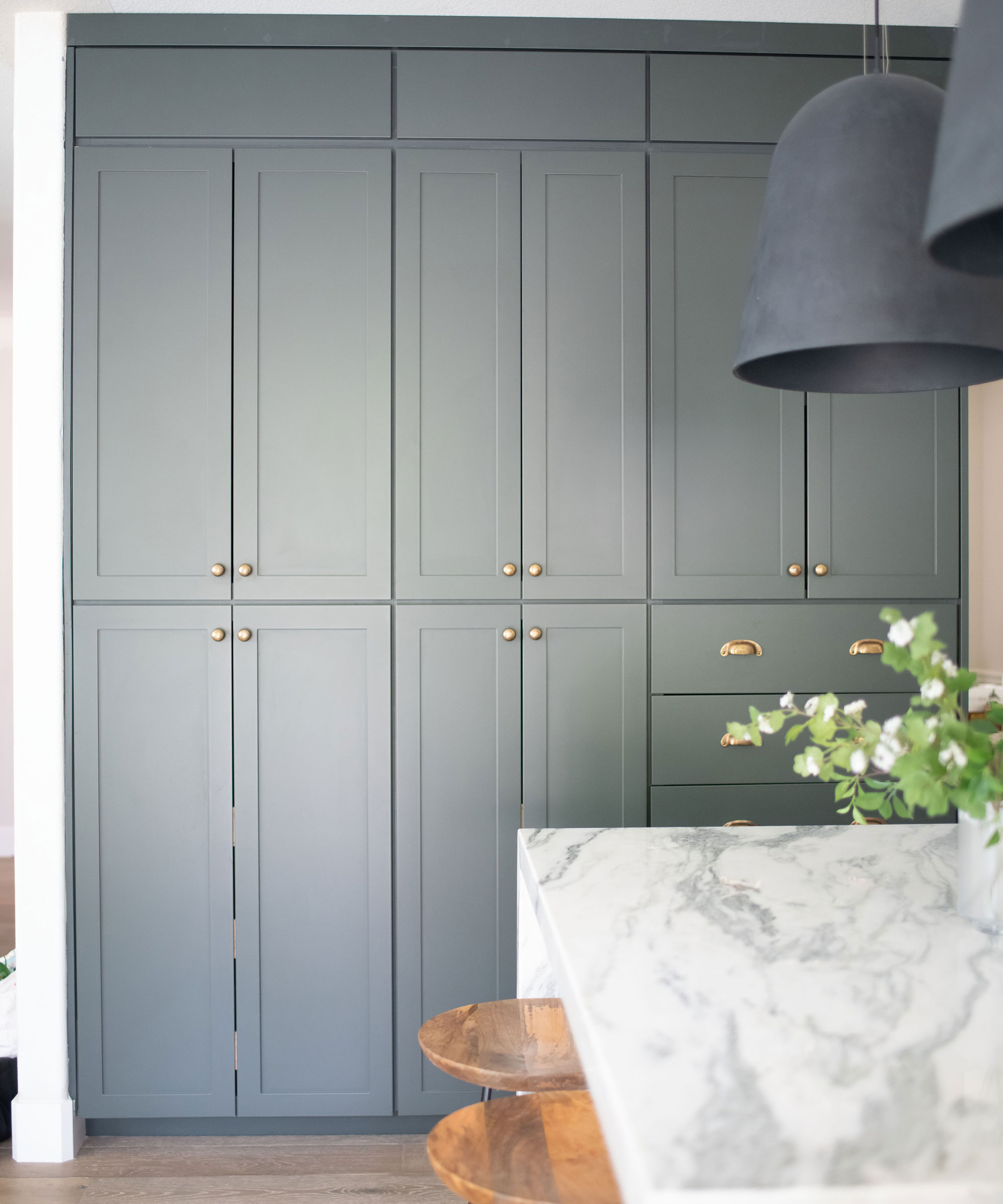
MDF, Medium Density Fiberboard, is one of the most popular kitchen cabinet materials to go for as it's easy on the budget yet available in a variety of styles and finishes. It's easy to clean and will last you a fair amount of time. It's similar to plywood in that it is a manufactured wood product made up of wood fibers bound with resin and compressed into panels.
MDF is more dense than hardwood and gives a smoother finish with no grain, making it ideal if you are painting kitchen cabinet doors yourself, to get a professional look.
'Due to its density and consistent structure, MDF can be machined using high-speed CNC cutting tools to create a variety of different 3-D profiles perfect for cabinet doors.' Adds Simone.
'A two-piece shaker cabinet door constructed using MDF will consist of a single piece forming the four-sided frame and another piece used for the center panel. MDF will expand and contract although less so than hardwoods, but since the frame and the center of the door are made of the same material they move together. With the shaker frame machined as a single piece, there are no joints to split apart like solid wood rails and stiles. The super-smooth and consistent surface of MDF allows for a high-end painted finish, while solid wood doors are harder to achieve a glass-like painted finish, as deep grain and knots create rough areas that paint accentuates.'
Palmer notes how MDF is hugely popular as it can easily be cut into different shapes and also coated in laminate which opens a world of design opportunity. He shares the benefits of choosing this kitchen cabinet material type.
Pros of MDF:
- Moisture resistant: Because MDF is made with wax and resin, this material is watertight. This is ideal in a kitchen where cabinets often come into contact with water. Its resistance to moisture also stops cabinets made of MDF from getting warped.
- Varying size options: MDF is easy to cut into different sizes, making it ideal for awkward-shaped, or extra-large kitchen cabinets.
- It has a flat, even surface: Being man-made, MDF panels are made perfectly smooth and even. The flat surface means it’s easy to apply laminate or even wood veneer onto the panels. It also means that paint can be applied to achieve a neat and attractive cabinet.
Cons of MDF
There are a few negative aspects of MDF to be aware of also notes Palmer:
- It’s not suitable for high temperatures: The manufacturing process of MDF means that unfortunately it’s not suitable for extremely high temperatures. While this is not ordinarily a problem for most kitchens, it could be a factor in a commercial kitchen with multiple ovens/hobs.
- It’s weaker than other cabinet materials: A more common complaint about MDF, when used for kitchen cabinets, is regarding its strength. Being made of a wood blend, rather than a solid material, MDF is quite weak in comparison. This means it can sag, or even break, if shelves are overloaded with weight over a long time.
Metal Kitchen Cabinets
You wouldn't usually find metal types of kitchen cabinets in a home but rather in commercial kitchens, it is still an option however and could give a modern kitchen look if that's what style you're going for. Palmer adds, 'Most people would associate stainless steel as a material for commercial kitchens or public building cafeterias, but nowadays it’s appearing more in modern style kitchens. As well as shiny plain steel, stainless steel cabinets can be painted for a more interesting and colorful appearance.'
Pros of Stainless Steel
- Easy to clean: Red wine and coffee stains on cabinets are a thing of the past for anyone opting for stainless steel. It’s easy to wipe down again and again with no wear on the material making cleaning a kitchen a breeze on all fronts.
- Water and heat-resistant: Stainless steel cabinets can withstand high temperatures and repeated water contact, unlike wooden cabinets.
- Durable: Stainless steel is an extremely durable material that is rarely affected by general wear and tear so it’s unlikely that you’ll ever need to replace your kitchen cabinets again.
Cons of Stainless Steel
'There are, however, several cons to this material that have stopped it from becoming a mainstream option for kitchen cabinets.' Palmer shares:
- It’s a very niche style: There’s no denying the fact that stainless steel kitchen cabinets are not everyone’s cup of tea. While it is a practical option that can be very stylish, this is only true if you like the modern look. Those looking for a traditional farmhouse style kitchen, or similar, would likely steer clear of steel.
- Stainless steel is hard to repair: While it is resistant to substantial damage, stainless steel can become scratched or dented – especially in a busy kitchen. When this happens it is quite difficult to repair in a way that would go unnoticed, so cabinet fronts may need replacing to maintain aesthetics.
Solid Wood Cabinets
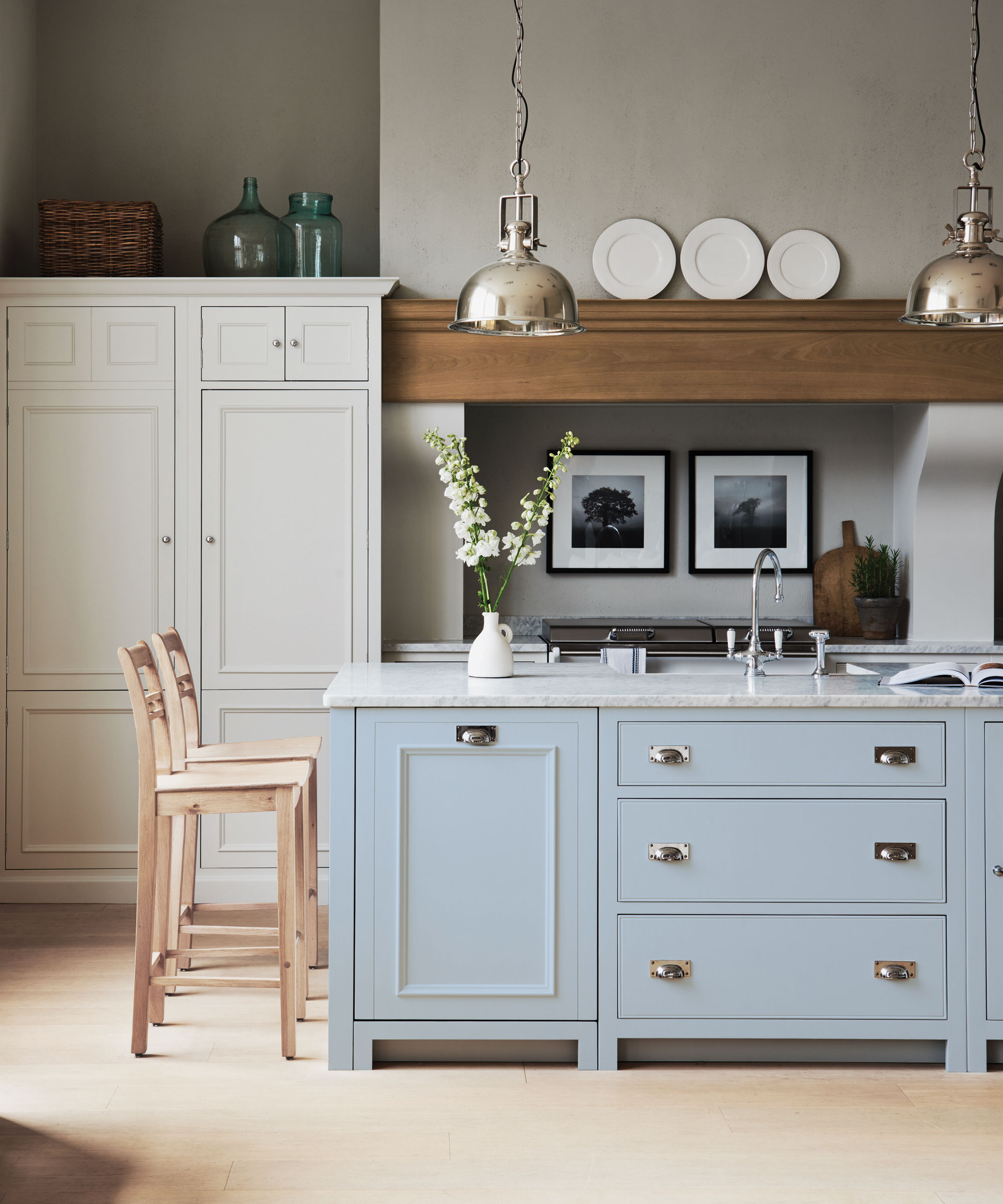
Solid wood kitchen cabinets are the dream and make up many of the most gorgeous and decorative kitchen ideas around. But, we all know too well that solid wood anything comes at a higher cost. The reasons in favor of solid wood kitchen cabinets are its unique beauty and the natural wood grain that can come through depending on the finish. It is the price point and the possibility of warping that can make solid wood less desirable if you're remodeling your kitchen on a budget.
Simone highlights, 'Solid hardwood doors in maple, oak, or cherry are commonly used for stained doors where the natural beauty of the wood grain is both enhanced and protected by a professionally applied finish. Cabinets built from solid wood are beautiful – but can be incredibly expensive depending on the wood species. Many framed cabinets are made from wood, or a combination of wood products and wood for a durable interior but paintable exterior. Solid wood cabinets are often used in luxury kitchens with solid wood doors to bring the color and grain from exterior to interior.'
'Wood doors are strong and durable, and scratches or dents can be repaired with a little sanding and a coat of matching stain. Stained wood doors are a great choice for homeowners wanting a classic-looking kitchen using a traditional design that shows off both the beauty and the sturdiness of hardwood doors.' Adds Simone'
Palmer highlights the pros of solid wood kitchen cabinets:
- Strength and durability: Especially when treated, wood kitchen cabinets can last for years.
- Environmentally friendly and more sustainable: Anyone looking to make their kitchen more eco-friendly should opt for a responsibly sourced solid wood for their kitchen cabinets. As long as it’s produced in a sustainable way, solid wood is better for the environment that manufactured materials.
- Available in many styles: Solid wood kitchen cabinets can be made using lots of different types of wood. Some of the most popular include oak, walnut, cherry, and maple, each of which offer various tones which can completely change the style of a kitchen. Not only are there different woods to choose from, but it’s also possible to paint or treat the wood in a way that still showcases its natural textures.
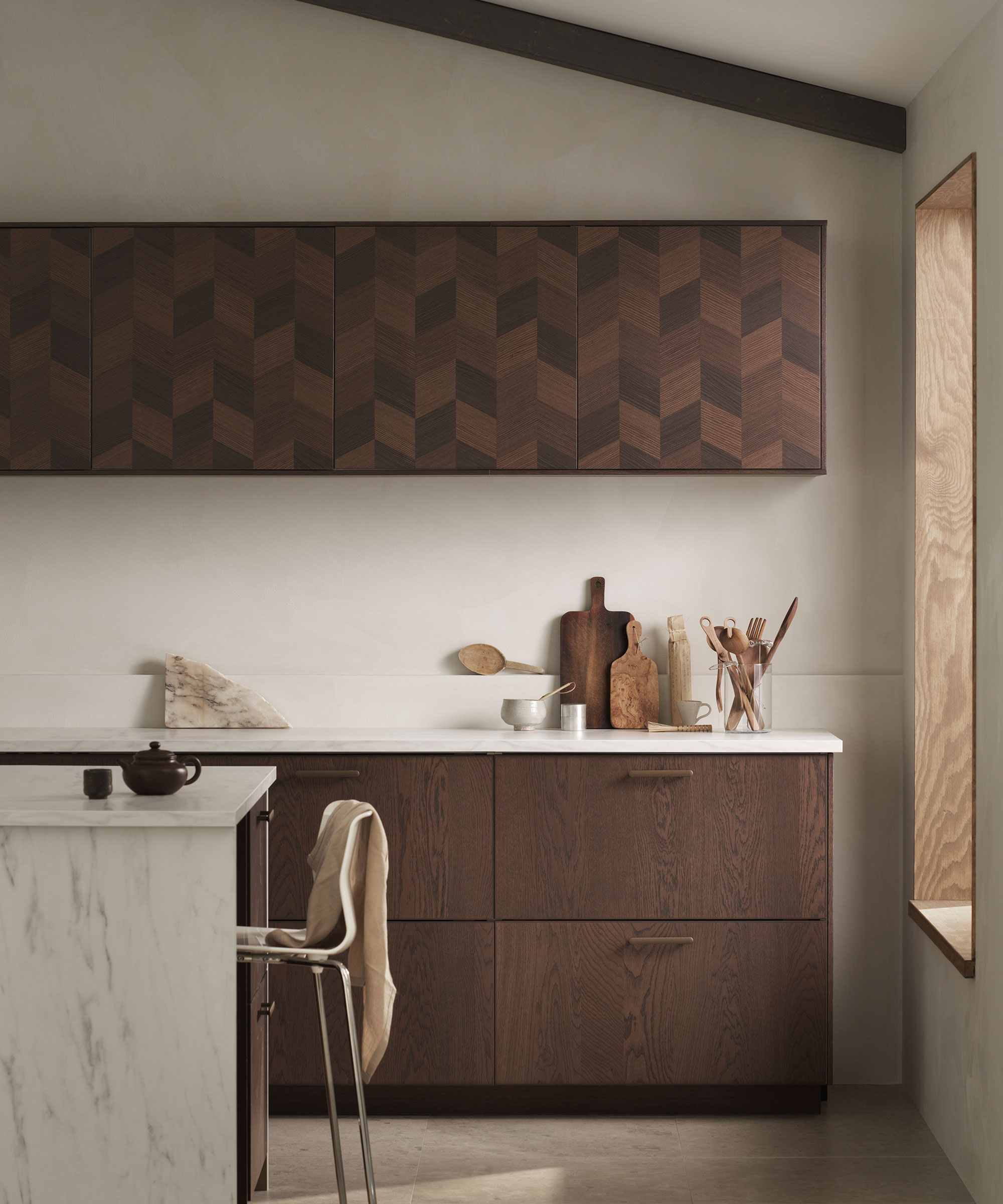
Cons of Solid Wood
Simone highlights some of the downfalls of solid wood, 'As a painted door, however, solid wood has its limitations. As durable as solid wood is, it also has a weakness of expansion and contraction when exposed to varying degrees of humidity. Just like a solid wood entry door that seems a little harder to close in the heat of summer, solid wood cabinet doors will expand in high humidity as they accept more moisture and contract in the winter as the air dries out. Since most cabinet doors are constructed using stiles and rails that frame a center panel, changes in humidity can cause the joints between the rails to shift ever so slightly as the wood expands or contracts.
On a painted door these small shifts between the joints can result in a hairline break in the painted surface resulting in a dark line at the joint. Over time as seasons pass and the wood continues to expand and contract, these breaks can lead to the paint actually chipping at the joints making for a less than perfect looking door in just a few years.'
Palmer shares:
- Solid wood is very heavy: Even though its weight lends well to its durability, it can be a hindrance for making cabinets. Solid wood cabinets need to be constructed well and installed properly in order to last, otherwise they may come away from the walls or rest to heavily on hinges, causing breakages.
- High price point: The main negative of solid wood is undeniably the price. It is high quality, sustainably-sourced, and furniture and cabinets are usually well made – all of which contribute to a higher price tag than alternatives like MDF and plywood.
- It’s more susceptible to stains: Anyone choosing to use solid wood that has had minimal treatment should be aware of the fact that it can stain easily. In a kitchen, where splashes and spills are frequent, this can be a nuisance.
What is the most durable kitchen cabinet?
If durability is the most important thing to you when choosing your kitchen cabinets, you'll want to choose a cabinet material that will take a high gloss finish so that it is more resistant to scratches and dents.
Diana Viera, managing partner at ITALKRAFT weighs in: 'Wood is great because it adds warmth to the kitchen and feels luxurious, but it's also more delicate and will likely have to be repaired or replaced sooner than more durable materials like technical veneer. Wood is also more expensive.
There's a new laminate called Fenix that’s extremely resistant to scratches and abrasion, which is another good option if durability is your priority.
The cons of using some of the more durable materials are that you will have fewer finish options, and they won’t have the same feel as natural materials like wood and stone.
Some types of wood are difficult to repair if they get damaged. For example, walnut changes in color over time, so if you have to replace one door or panel, it won’t match the others.'
Simone notes how melamine is a good choice for durability if replacing your entire kitchen cabinet box, 'The material of choice for box-store brands and many custom cabinet makers alike – melamine cabinet boxes are typically a particleboard core wrapped in durable and moisture-resistant melamine. While many stores use a white interior to the cabinet, imitation wood grain looks are an option through custom cabinet makers for the look of solid wood but durability and cost of melamine.'
What's better for cabinets, MDF or Plywood?
Plywood cabinets can be a good choice for kitchen cabinets as it's stronger than MDF, and still relatively inexpensive. 'Plywood is made using a number of wood layers that are laminated and glued together with a veneer. It varies in quality and is graded from AA to E. AA is the highest grade and E the lowest.' Shares Palmer.
Join our newsletter
Get small space home decor ideas, celeb inspiration, DIY tips and more, straight to your inbox!

I'm Cam, the former deputy editor of Real Homes who worked on the site from 2020 to 2023. As a renter myself, sharing a home with two friends (and my cat) in London, I know all too well the challenges that this can pose when it comes to creating your perfect setup. As someone who has always loved everything interior design-related, I cannot rest until a home feels right and I am really passionate about helping others get there too, no matter what their living situation, style, or budget may be. It’s not always the easiest to figure out, but the journey is fun and the results are so worth it.
After interior design, travel, art, and photography are my next big passions. When I’m not writing or editing homes content, I’m usually tapping into other creative outlets, exploring galleries in London or further afield, taking photos, scribbling, or drawing!
-
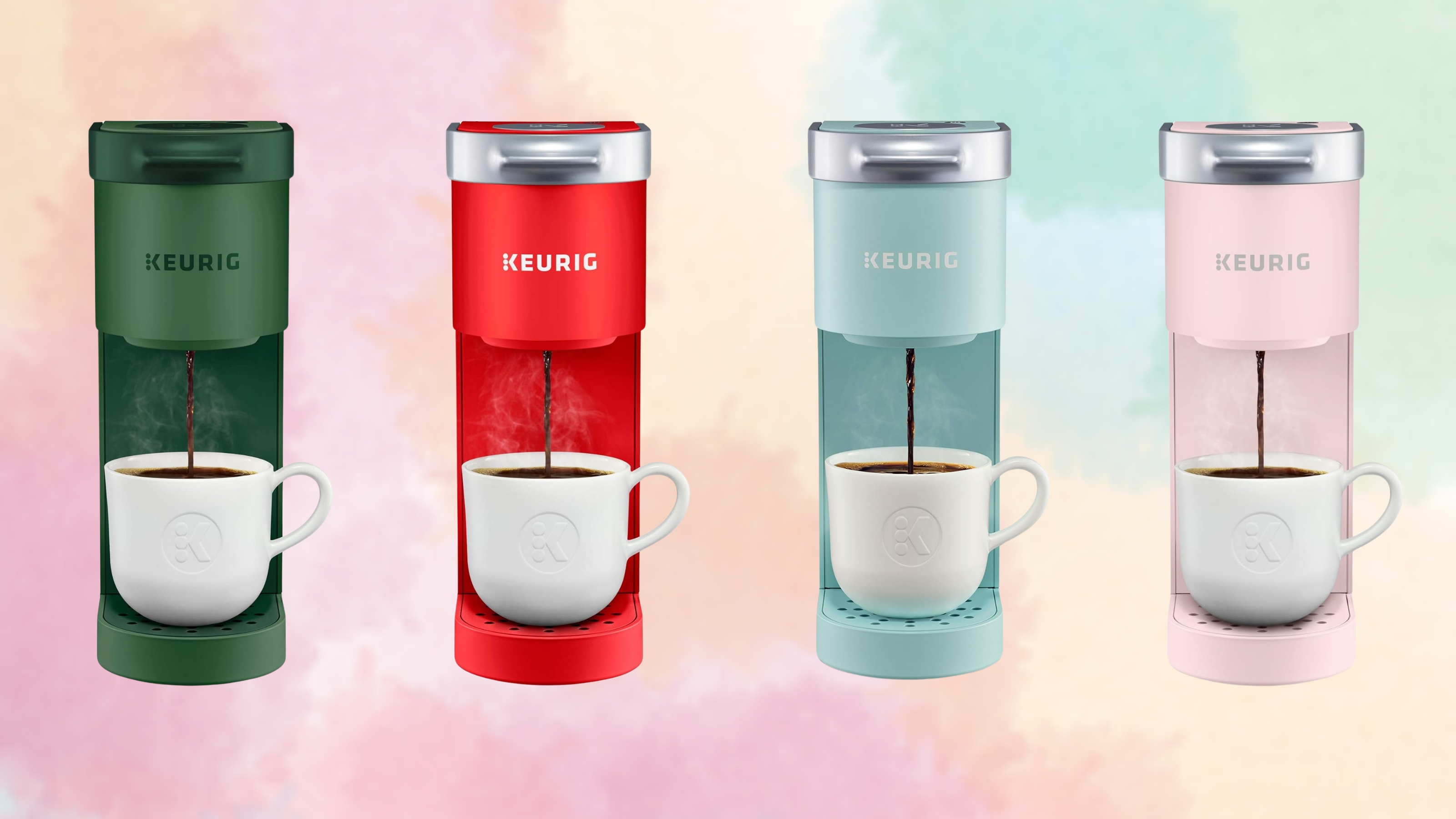 Amazon's bestselling Keurig K-Mini Coffee Maker sale is on now with 40% off — here's why 97,000 customers love it
Amazon's bestselling Keurig K-Mini Coffee Maker sale is on now with 40% off — here's why 97,000 customers love itAmazon's bestselling Keurig K-Mini Coffee Maker sale is on now and offers 40% off. Here's why we and thousands of customers love it. Plus, some alternatives
By Punteha van Terheyden
-
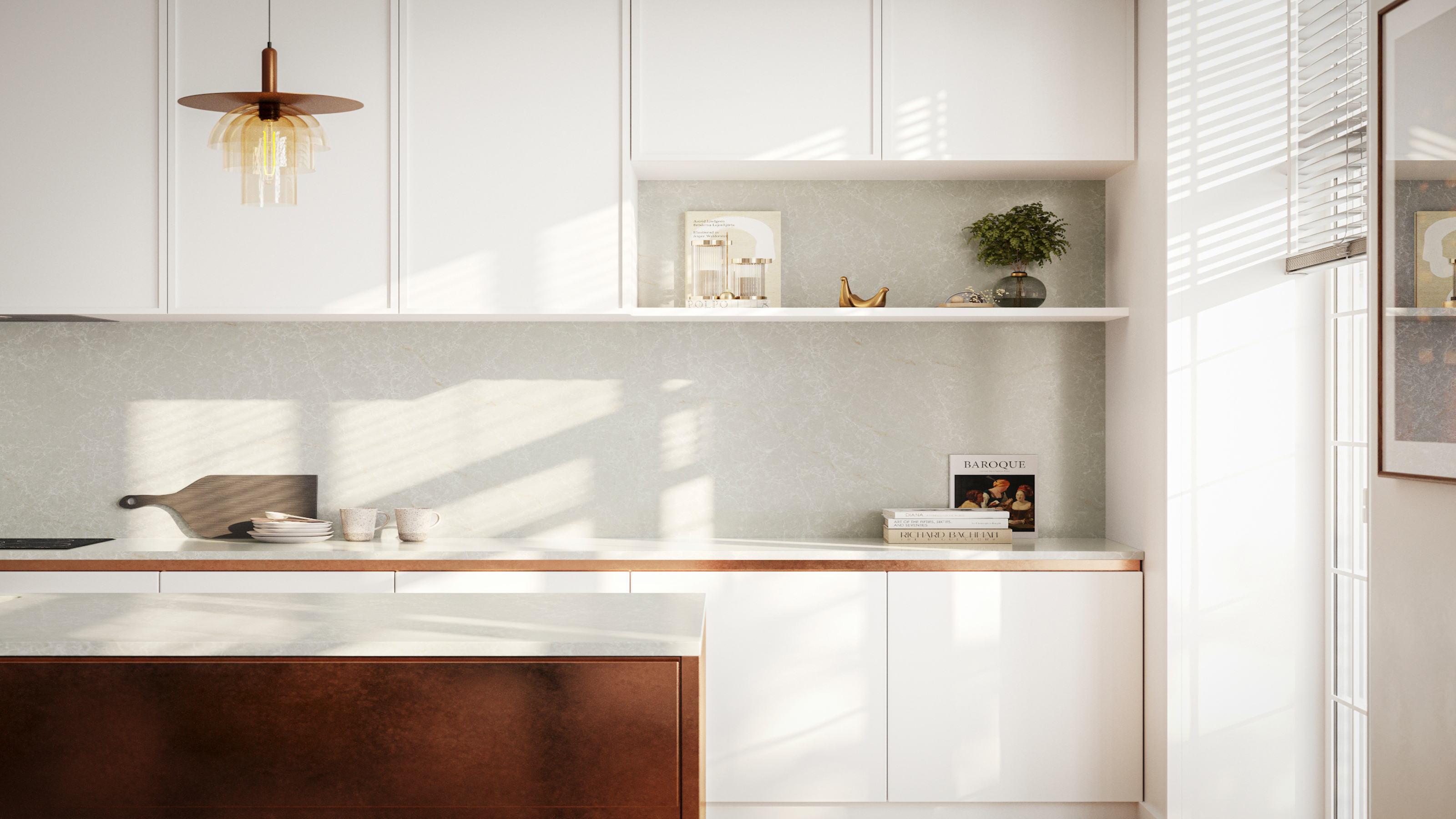 Pros reveal the 10 kitchen cabinet design mistakes to avoid, and what to do instead
Pros reveal the 10 kitchen cabinet design mistakes to avoid, and what to do insteadThe 10 common kitchen cabinet design mistakes when choosing and installing kitchen cabinets. Solutions to problems and how to avoid the issues.
By Isabella Charlesworth
-
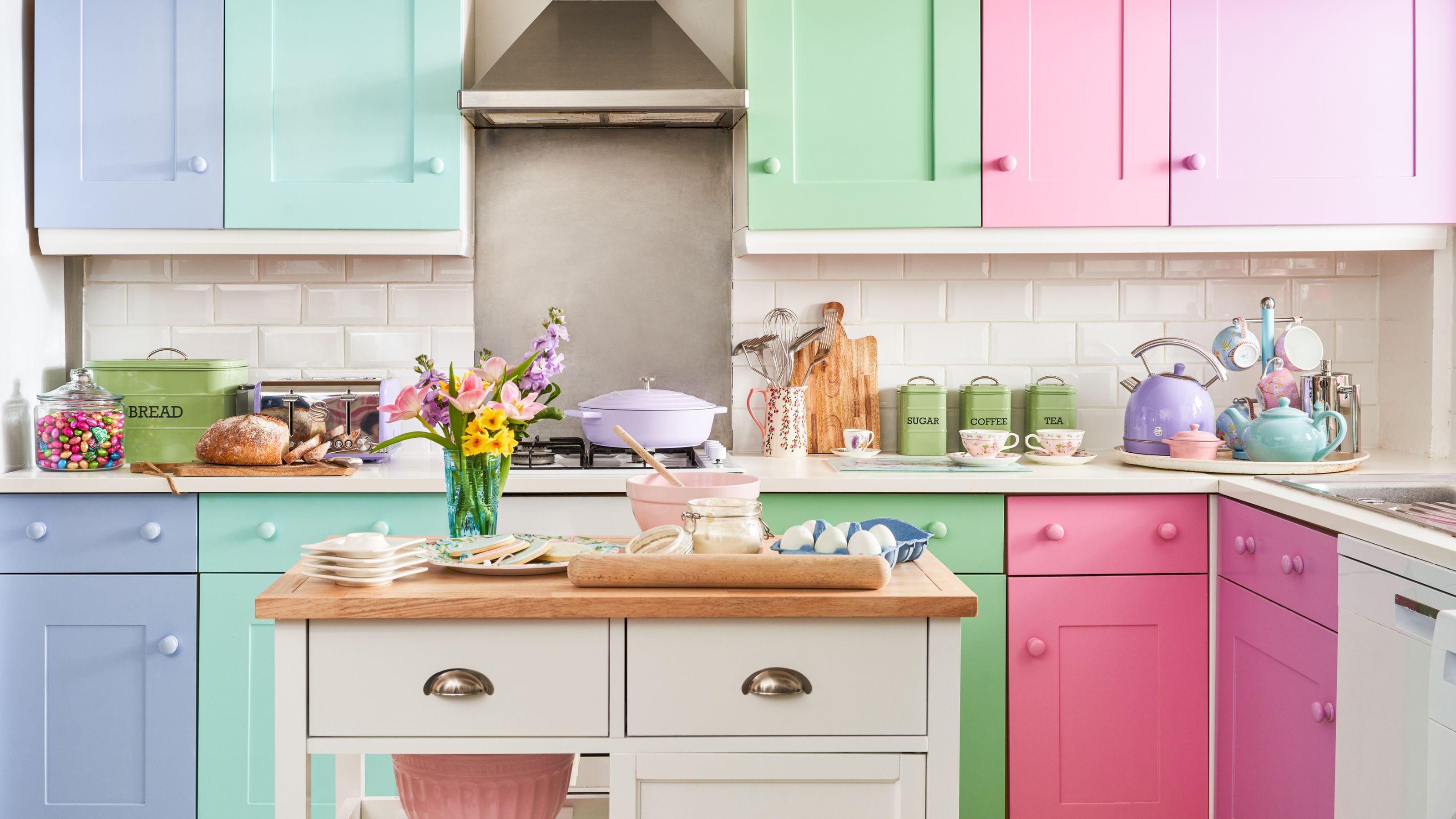 10 pretty pastel kitchen ideas that are utterly dreamy and delicious
10 pretty pastel kitchen ideas that are utterly dreamy and deliciousIce cream sweet pastel kitchen ideas are perfect for adding playfulness. We've asked designers for their favorite ways to bring these in light shades
By Eve Smallman
-
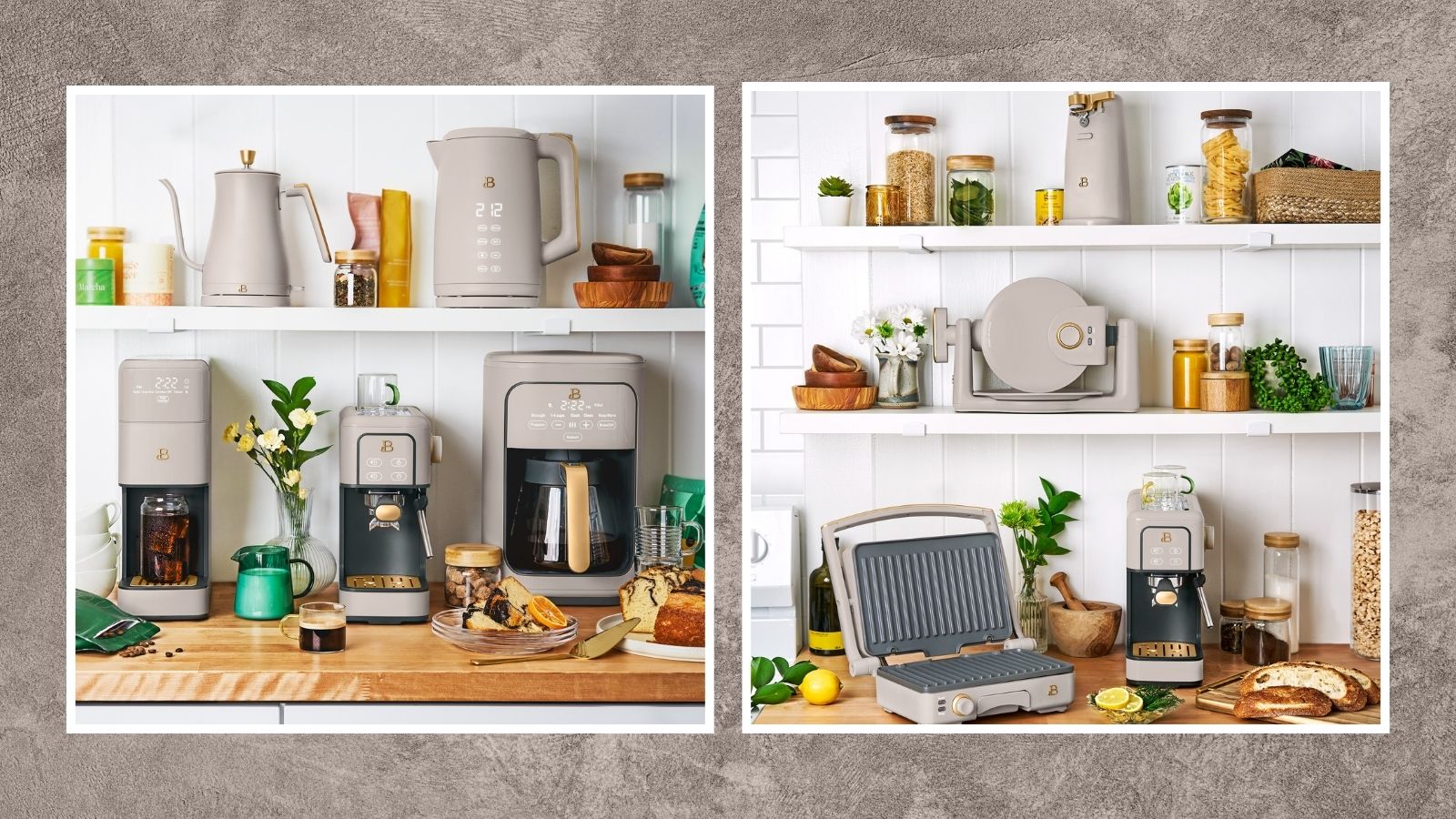 New Beautiful by Drew Barrymore kitchen appliances just dropped, and they'll take your brunch game to new levels
New Beautiful by Drew Barrymore kitchen appliances just dropped, and they'll take your brunch game to new levelsNew Beautiful by Drew Barrymore kitchen appliances just dropped — learn all about the waffle maker, espresso maker, electric can opener, and space-saving kitchen island
By Danielle Valente
-
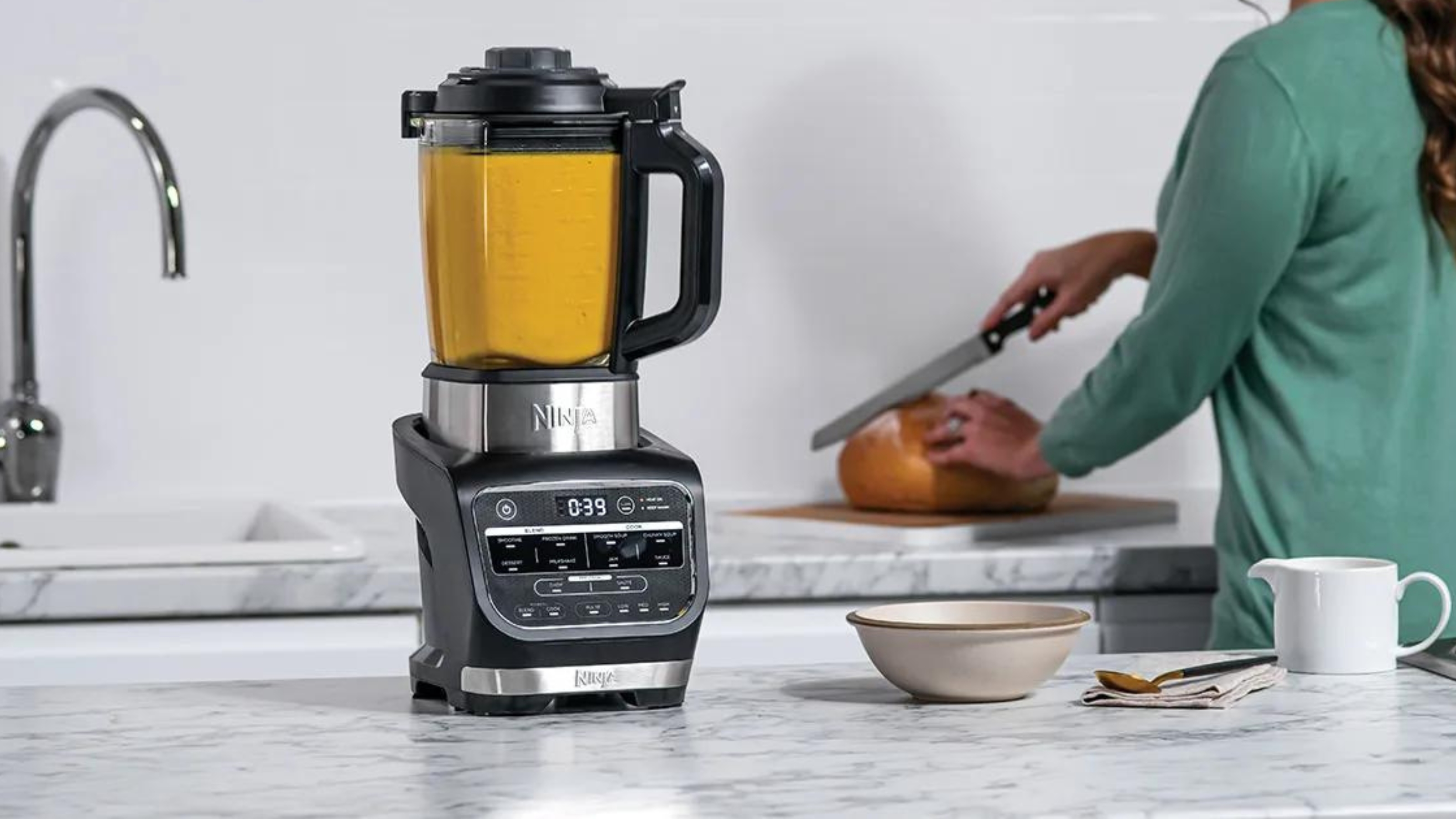
 The Ninja Foodi hot and cold blender has turned my kitchen into a fancy no-waste restaurant
The Ninja Foodi hot and cold blender has turned my kitchen into a fancy no-waste restaurantUsing the Ninja Foodi cold and hot blender, I've made hearty soups from just 65 cents per serving
By Christina Chrysostomou
-
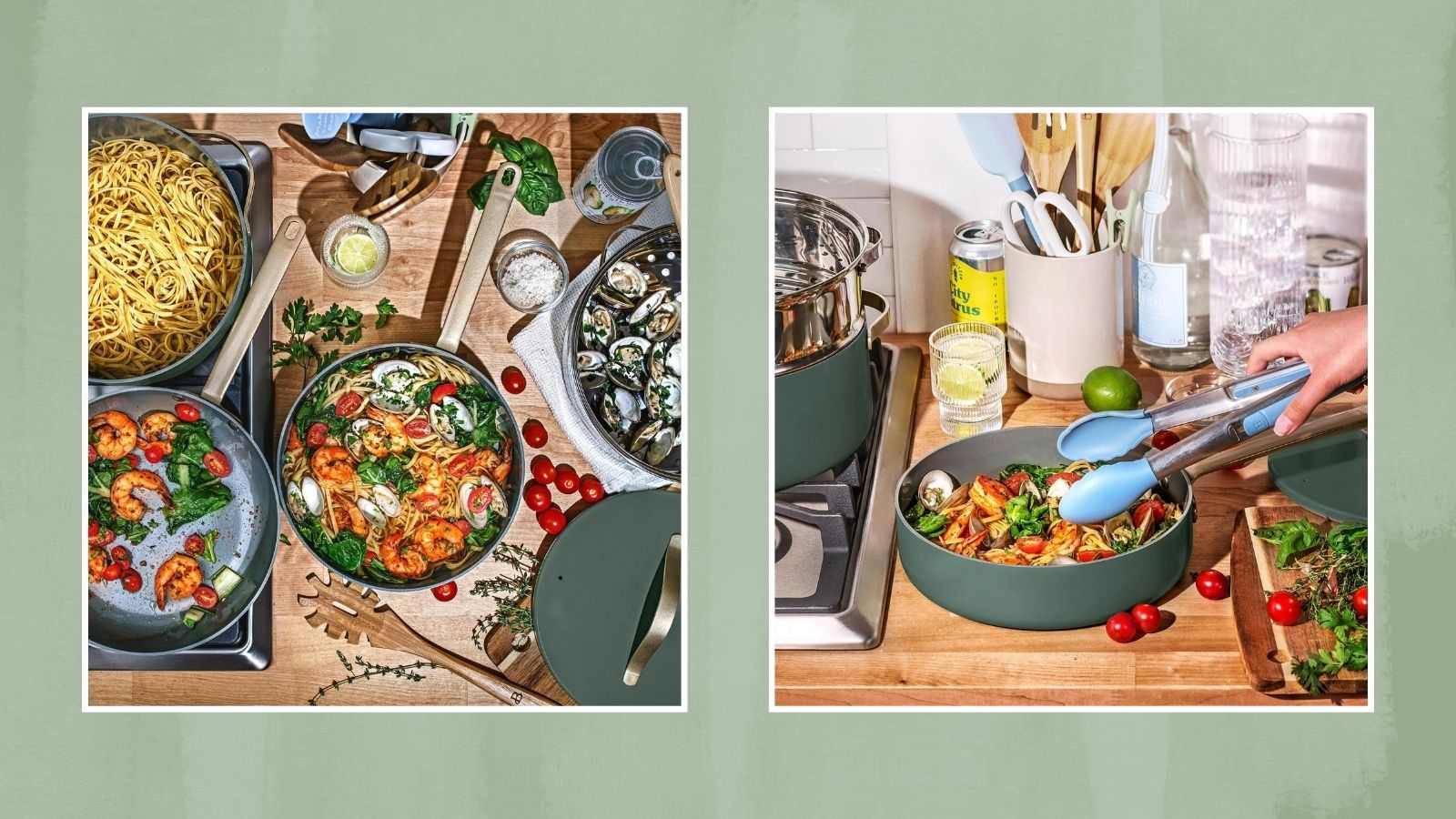 Drew Barrymore drops a new color in her Beautiful kitchen line just in 'thyme' for the holidays
Drew Barrymore drops a new color in her Beautiful kitchen line just in 'thyme' for the holidaysCheck out our edit of the Drew Barrymore cookware set and kitchen appliances in the limited-time "thyme green"
By Danielle Valente
-
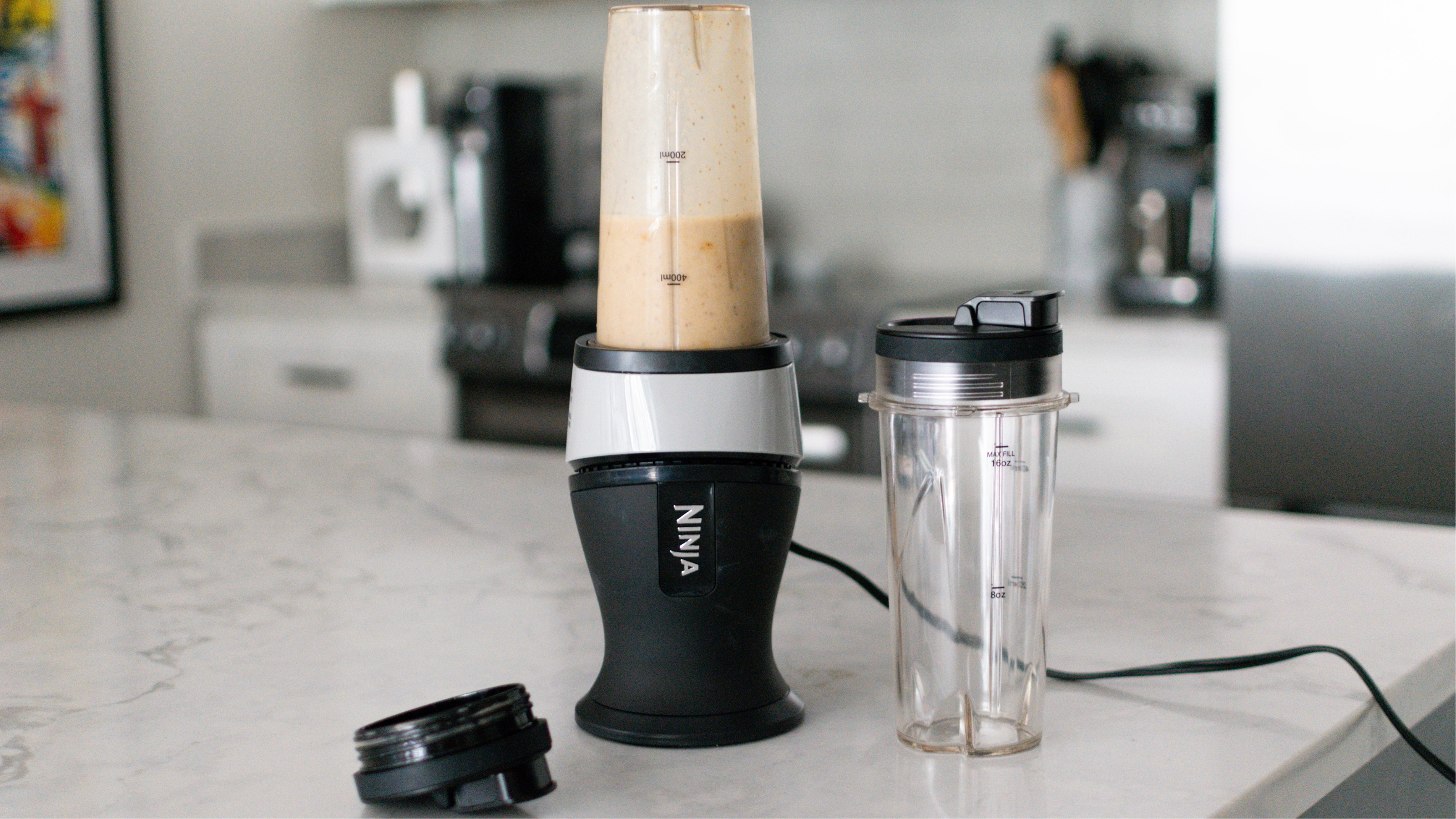
 The Ninja Fit blender is so compact that I no longer dread pulling out this type of appliance
The Ninja Fit blender is so compact that I no longer dread pulling out this type of applianceLearn more about the Ninja Fit blender in our comprehensive review after testing the kitchen gadget for several weeks and understanding all of its pros and cons.
By Heather Bien
-
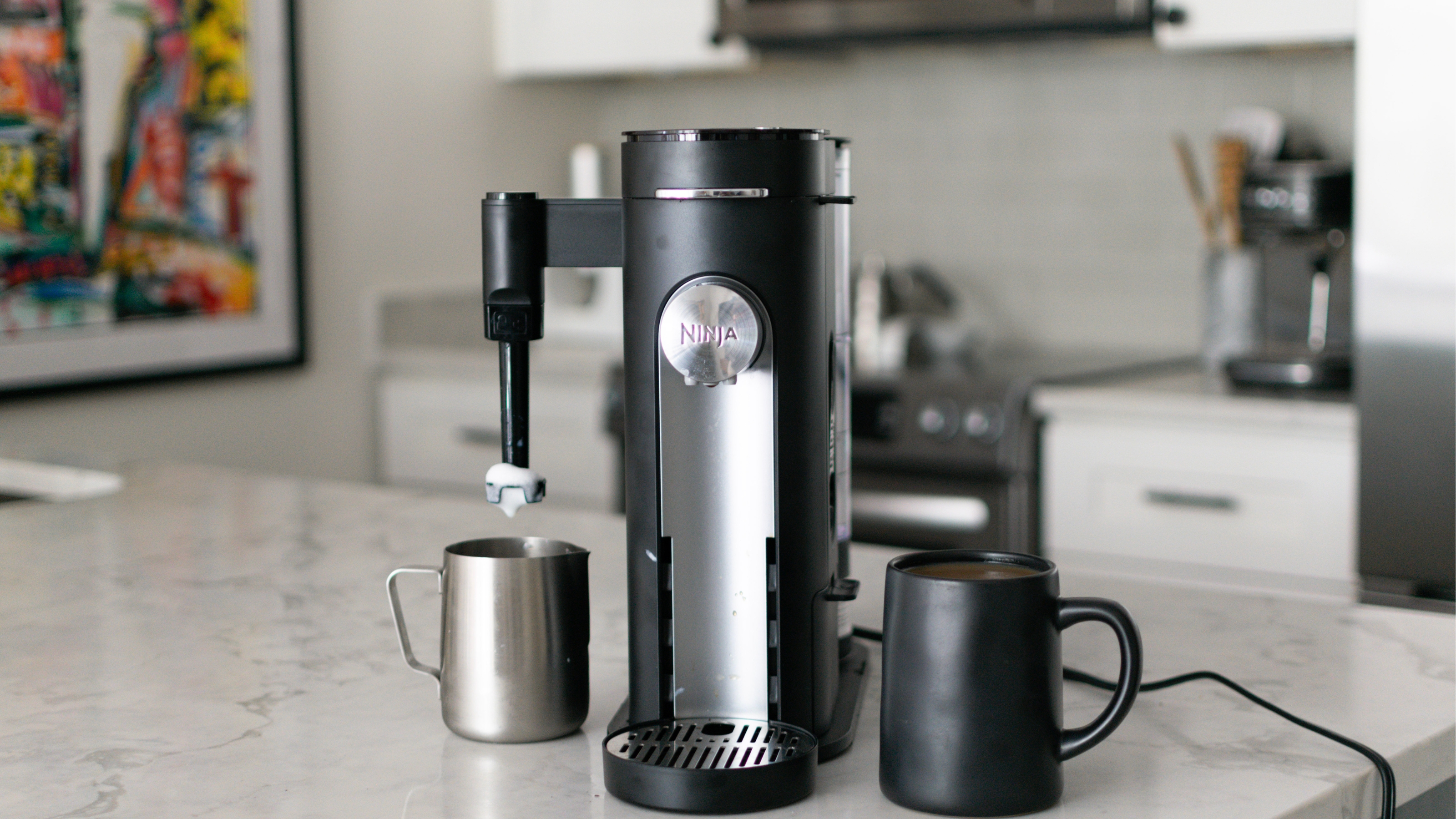
 Review: this Ninja pods and grounds coffee maker has solved our bean debate
Review: this Ninja pods and grounds coffee maker has solved our bean debateThe Ninja pods and grounds coffee maker makes everything from hot black coffee to milky brews with a frothed top and even iced drinks. See what else it's capable of in our review.
By Heather Bien